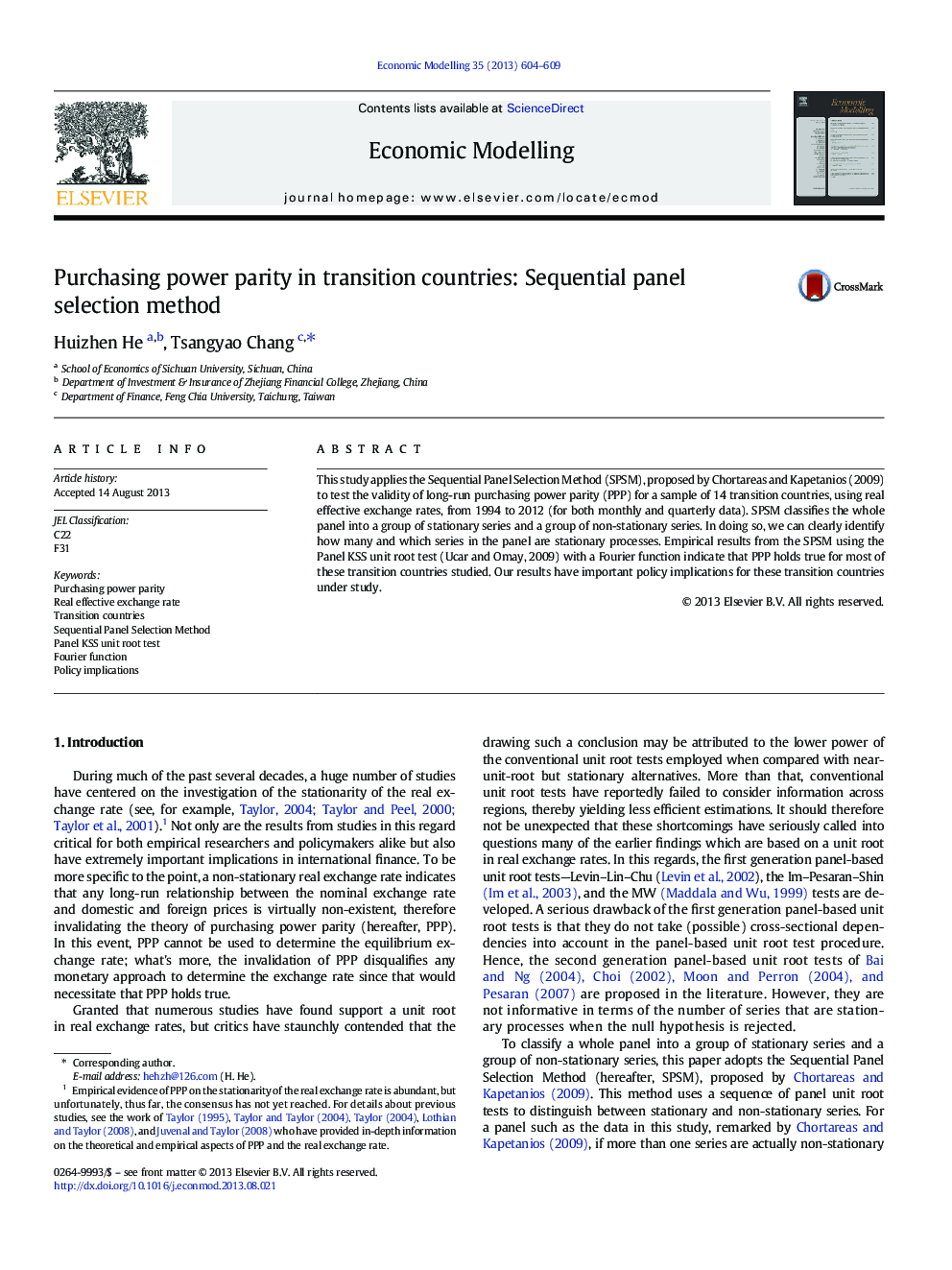| Article ID | Journal | Published Year | Pages | File Type |
|---|---|---|---|---|
| 5054654 | Economic Modelling | 2013 | 6 Pages |
Abstract
This study applies the Sequential Panel Selection Method (SPSM), proposed by Chortareas and Kapetanios (2009) to test the validity of long-run purchasing power parity (PPP) for a sample of 14 transition countries, using real effective exchange rates, from 1994 to 2012 (for both monthly and quarterly data). SPSM classifies the whole panel into a group of stationary series and a group of non-stationary series. In doing so, we can clearly identify how many and which series in the panel are stationary processes. Empirical results from the SPSM using the Panel KSS unit root test (Ucar and Omay, 2009) with a Fourier function indicate that PPP holds true for most of these transition countries studied. Our results have important policy implications for these transition countries under study.
Keywords
Related Topics
Social Sciences and Humanities
Economics, Econometrics and Finance
Economics and Econometrics
Authors
Huizhen He, Tsangyao Chang,
